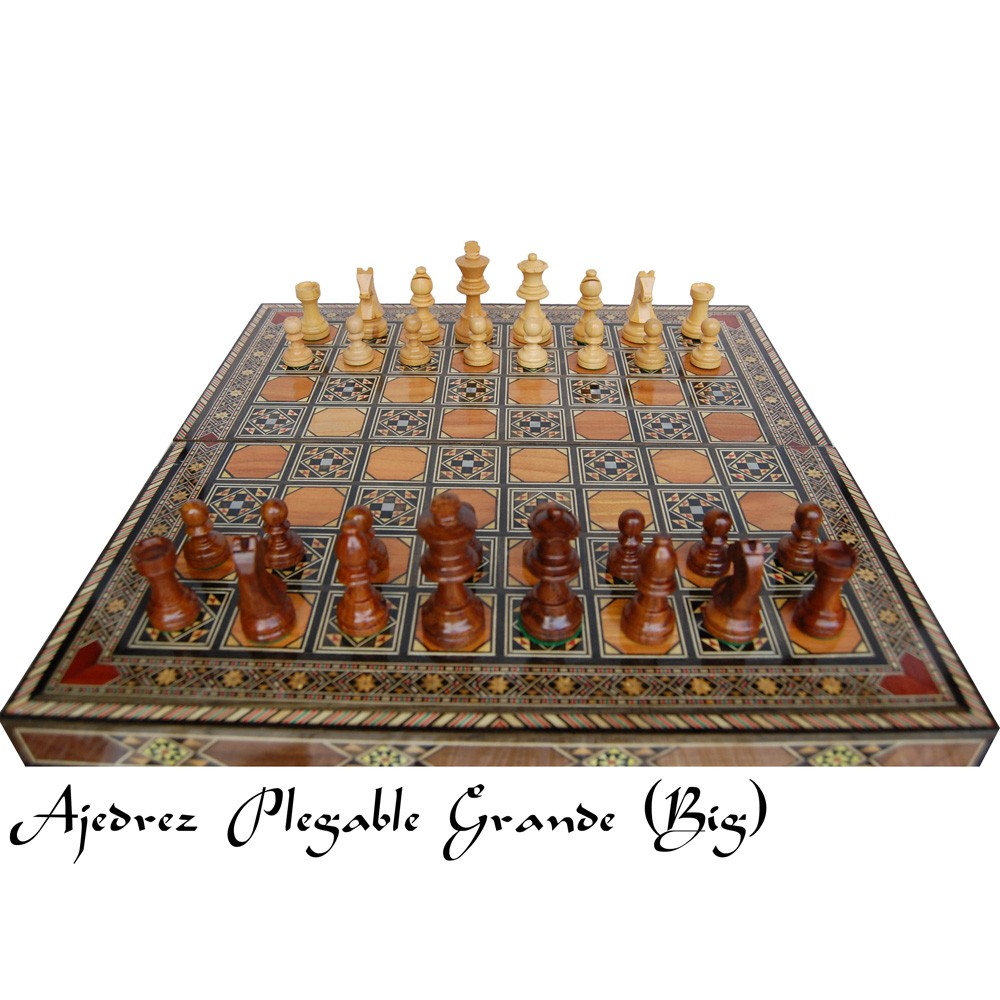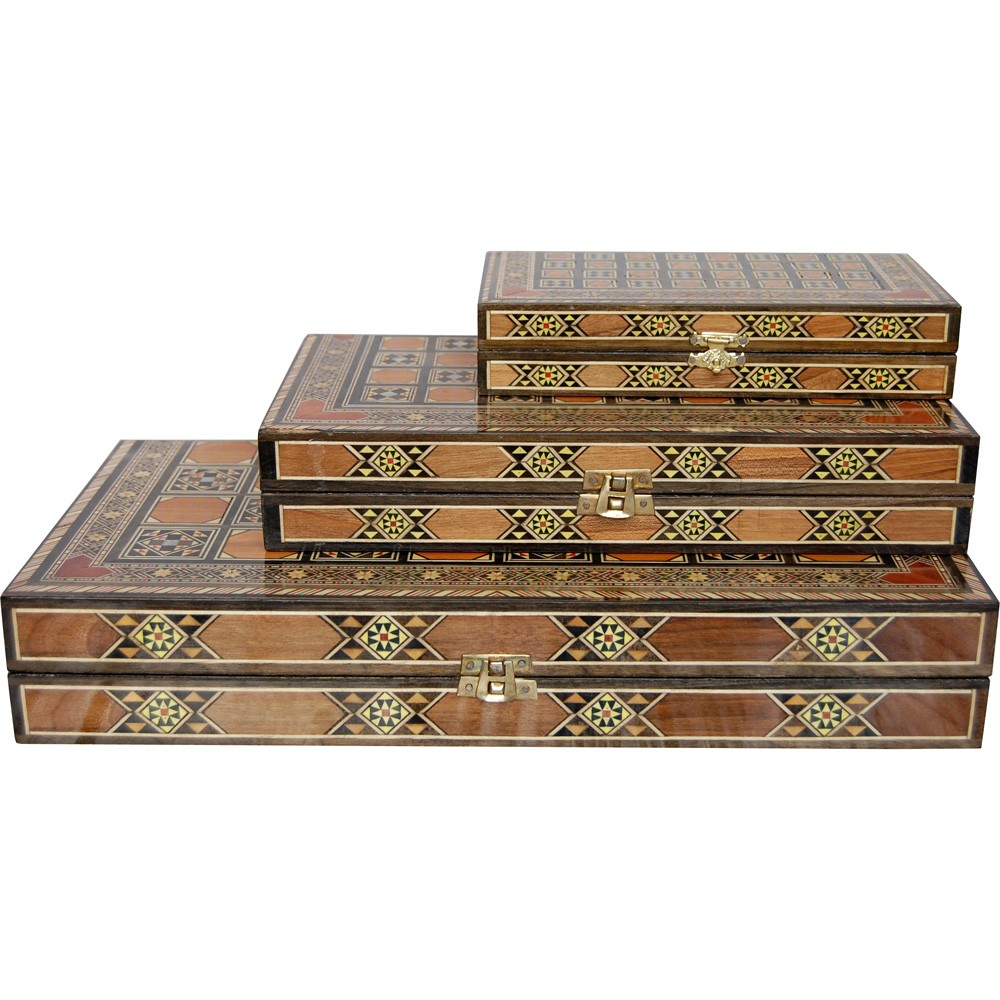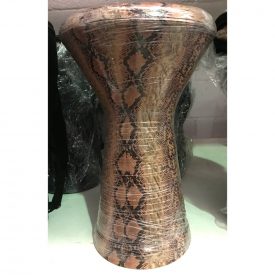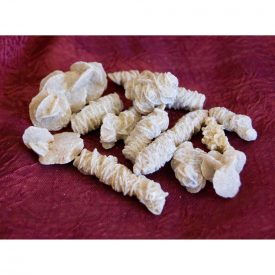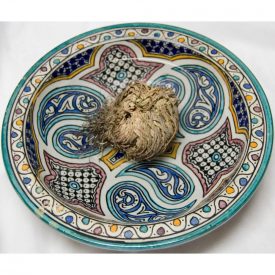Folding chess board with pieces. Three sizes available.
Product Measurements:
Small:
Open:21 x 21 x 2 cm
Closed:21 x 10´5 x 4 cm
Medium:
Open:30 x 30 x 2´75 cm
Closed:30 x 15 x 5´5 cm
Big:
Open:40 x 40 x 3´25 cm
Closed:40 x 20 x 6´5 cm
The chips are made of wood. Each model has a different size of chips.
This product has been made using the artisanal technique of Inlayand has been manufactured inSyria, one of the few places where this technique still exists.br />
The base is made of Walnut wood and the inlays are made of:
– Mother of pearl
– Palo de Rosal
– Olive stick
– Lemon stick
– Pinewood
It has a varnish finish.
Taracea is an artisanal technique applied to floor coverings, walls, furniture, sculptures and artistic objects. In the work, pieces cut from different materials (stones, marble, wood, metals …) are used, which are fitted into a support until the decorative design is made. It is an inlay job. Between some pieces and others there is a contrast effect that depends on the color and the characteristics of the material used.
In the inlay, the base bed is not visible between one piece and another embedded, as is the case with mosaic. The material to be embedded with the shape of the design is cut, placed on the surface or support and the outline is drawn. Once the drawing is captured on the support, it is emptied slightly, leaving a hole where the inlay will be embedded; then the whole is smoothed and leveled so that the surface is flush.
There is news of inlaid work from the Sumerian period in Mesopotamia (3000 years BC) and from the Ming dynasty (1368-1644) in China. It spread throughout Asia Minor (now Turkey) and was later adopted by the Romans when they came into contact with the Hellenistic world. They called this art incrustatio or loricatito. Pliny the Elder makes an extensive description of this technique in his work Naturalis historia. The pieces with which the inlays were made, he calls crustae. The Arabs introduced this technique in Spain, which is why inlay derives from the Arabic word Tar’sia, which means inlay.

